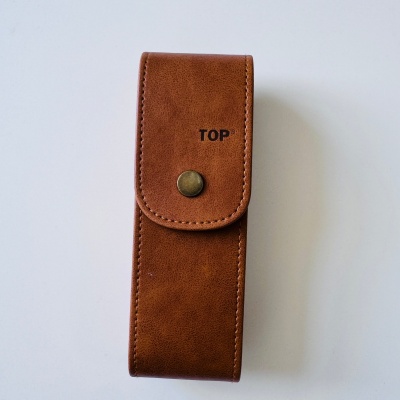Why handmade eyewear cases are not entirely made by hand, mold forming is indispensable in the process?
In the eyewear case industry, the competition of various brands in the market is very fierce, the businessmen spend time and energy on the quality of eyewear cases just to improve the brand influence and the competitiveness of the products in the market, and then, what is neglected is the importance of the packaging in the brand’s imagination, and the businessmen are pursuing the cost-effective eyewear case packaging.
In today’s era of pursuing high efficiency and mass production, handmade eyewear cases are still favored by consumers for their unique texture and fine craftsmanship. However, many people may not be aware that even handmade eyewear cases cannot be produced without molds. Why do handmade eyewear cases need molds? What kind of craftsmanship wisdom lies behind it?
1. Precise molding ensures stable quality
Handmade eyewear cases don’t mean relying entirely on workers’ handwork, especially for eyewear cases that need to fit perfectly with glasses. Mold shaping can ensure the details are more perfect, the size, curvature, opening and closing structure of each eyewear case need to be matched to avoid product defects caused by manual errors. For example, the hinge part, the edge connection part, the inner velvet, the logo position, the special shape treatment and other details of the eyewear case must match the size of the eyewear case accurately, and the molds can help the craftsmen to achieve this goal efficiently, while retaining the delicate touch of the handmade.
2. Enhance efficiency, balance between handmade and mass production
Purely handmade eyewear cases may require more labor and other costs, while with the help of molds for basic shaping, the craftsmen can focus more on the details of the handmade work, sewing, decorations and other personalized aspects. This not only improves production efficiency, but also enables the shape of handmade eyewear cases to meet certain market demands while maintaining uniqueness, so that more consumers can experience the temperature of handmade products.
youtuber factory video: mold making handmade eyewear case
https://youtube.com/shorts/lOT8clwQBJc
3. More rational use of materials, reduce waste
Eyewear cases are usually made of materials such as leather, fabric, velvet, cardboard or high-density fiberboard, etc. These raw materials are more costly, and manual cutting is prone to errors, which leads to waste of edges and corners. Mould molding can use computer design and layout, optimize the material cutting scheme, to ensure that each piece of material can be used in the best way, which is both environmentally friendly and cost-saving.
4. Inherit the craftsmanship and integrate modern technology
Mold molding is not a complete replacement of handmade, but complements the traditional skills. Many high-end eyewear case brands insist on handmade while using molds to ensure the basic accuracy of the products, so that the craftsmen can devote more energy to artistic creations, such as embossing, dyeing or inlaying processes, so as to create fine products with both practicality and enhanced brand value.
Moulds, make handmade perfect
The combination of molding and handmade represents a harmonious symbiosis of traditional craftsmanship and modern technology. It is not only the guarantee of quality, but also the extension of wisdom. For brand owners pursuing the details of eyewear case packaging, this kind of craft means that each eyewear case can be both precise and unique, perfectly carrying the brand image and at the same time interpreting the real meaning of eyewear brand owner’s positioning in the market.
As a professional eyewear case manufacturer, we are always committed to exploring the balance between craftsmanship and innovation, so that each handmade eyewear case becomes a practical and treasured work of art for consumers.
Post time: Aug-05-2025

